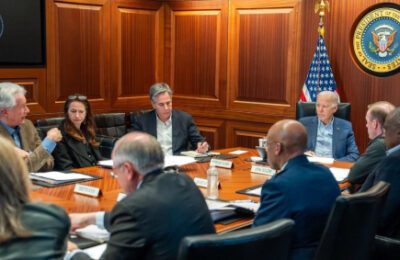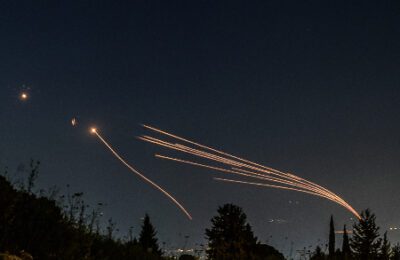 FIRST-TIME visitors to the Kirkland Museum of Fine & Decorative Art at 1311 Pearl Street must ring a bell in order to obtain admittance. Once inside, its a bit like tumbling down a long and winding rabbit hole of the senses.
FIRST-TIME visitors to the Kirkland Museum of Fine & Decorative Art at 1311 Pearl Street must ring a bell in order to obtain admittance. Once inside, its a bit like tumbling down a long and winding rabbit hole of the senses.
Vance Kirkland would love it.
Arguably one of Colorados most famous artists, Kirkland painted fantastical creatures and explosive nebulae that existed only in his extraordinary imagination.
But when it came to a plate, a coffee cup or a living room chair, he surrounded himself with beautiful shapes reflective of 20th century moods.
If Im going to sit on something, eat out of something or drink out of something, its going to be great design, he always said.
The Kirkland Museum highlights 100 paintings spanning Kirklands five artistic periods: designed realism, surrealism, hard edge abstraction, abstract expressionism and the Dot Paintings.
Works of over 170 influential Colorado artists are on permanent display in the Colorado Modernist Collection.
But what really sets this museum apart are 3,300 decorative art pieces from such major aesthetic movements as Arts & Crafts, Art Nouveau, Art Deco, Modernism and Pop Art.
The decorative art collection includes iconic furniture, ceramics, lamps, metalwork, tableware, glassware, and time-bound peculiarities like an Electrolux Vacuum Cleaner and an atomic wall clock.
Vance Kirkland owned about 5% to 10% of what we have on view, says Maya Wright, marketing coordinator, as her arms form an open circle. This is not his collection. But it is inspired by his philosophy.
The Kirkland Museum of Fine and Decorative Art is structured around Kirklands original 1911 Arts & Crafts studio, the oldest commercial art building in Denver.
Upon Kirklands death in 1981, his estate was willed to current museum director, curator and founder Hugh Grant.
In 1998, construction began on an expansive adjoining space to accommodate the decorative art collection and the Colorado Modernist Collection.
The museum opened to the public in 2003.
Unlike traditional art museums, where separate wings are exclusively devoted to a particular artist or movement, collections at the Kirkland mix and match with unerring appeal.
For example, just off the main entrance, Vance Kirklands Nebula Near Mars (1959) hangs above Irving Harpers whimsical Marshmallow Sofa (1956).
Instead of diminishing the sofa, or being diminished by it, the Kirkland painting delivers a one-two punch of absolute cohesion.
Even the most sophisticated artistic temperament will swoon under the sheer quantity of visual opportunities at this museum.
A chain reaction of ahs entices tired feet like an ice cream cone on a hot summers eve refreshing, energizing, delightful.
VANCE Kirkland died well before the advent of DVDs, digital cameras, iPods and Kindles yet he probably anticipated them in the starry, starry nights of his imagination.
Born in 1904 in Ohio, he earned a diploma in painting and a bachelor of education in art degree from the Cleveland School of Art.
After being certified by the state of Ohio, he was courted by the University of Denver and Princeton University.
During the Princeton interview, the university rescinded its offer when it realized that the prodigiously talented Kirkland was only in his mid-20s.
DU, unfazed by chronological considerations, offered Kirkland the job as founding director of its School of Art in 1929.
The school was located on the top floor of the Chappell House at 13th Avenue and Logan. (The first and second floor of the Chappell House served as quarters for the fledgling Denver Art Museum.)
Three years later, when members of the art schools first graduating class approached matriculation, DU decided it would not grant full academic weight to art credits.
Kirkland either quit or was fired, depending on who you ask, says Maya Wright. But he was definitely in a fit about that.
Kirkland purchased the building at 1311 Pearl and opened the Kirkland School of Art, which ran until 1946.
A popular professor, he attracted a large student following from DU.
CU later accredited the school.
By 1946, however, DU wanted Kirkland to return.
What do we have to do to get you back here? DUs chancellor asked Kirkland.
You could give me a salary equal to yours, answered the pragmatic visionary.
The chancellor agreed.
Kirkland stayed at DU for the rest of his career but maintained the Pearl Street residence as an office and studio.
Pointing to a row of skylights on the north side of the school, Wright explains that they functioned as the major source of light until the 1970s.
Were in an Arts & Crafts building, she says. There was no electricity or running water.
Moving toward a case crammed with copper coffee pots and beautifully designed dinnerware, she zeroes in on a pair of Tiffany candlesticks.
Kirkland owned these. See the wax on the sides?
Designed realism, Kirklands first artistic stage, utilized watercolors to capture realistic scenes with a few unnatural shapes and colors, like an orange waterfall added to the mix.
Some of Kirklands professors dismissed the brazen style, while others warmed to it.
When he moved to Colorado, Kirkland painted mountains like everyone else, Wright says. But he felt that was cliché. So he stopped painting what was out there and started focusing on mosses and rocks on the ground.
This evolved into Kirklands surrealistic period of the 1940s.
He made a pretty good living as an artist, Wright says, but he got more and more abstract.
After working in watercolors for half of his career, he switched to oil and water abstractions.
Out in the original foyer, Kirklands hats hang on their original hooks, conjuring a palpable image of the short, bespectacled man who lived here.
Kirkland married Anne Fox Oliphant Olson in 1941, and their home became a cultural nexus for musical concerts and salons. The couple did not have children.
Wright says that Kirklands former students often drop by the museum.
Several have told me that they never saw his artwork as students, she says.
He never showed them his paintings. Apparently, he didnt want to taint their imagination, or influence them to the extent that they painted like he did.
Kirkland wanted them to find their own style.
IT is in Kirklands actual studio that stories slightly stranger than fiction emerge about the dapper dean.
Physically, the room resembles a traditional workspace: a huge color-splattered table; a paint-smeared palette on a shelf; brushes; spoons; baby jars of dried paint; oil lamps; skylights.
Several wire straps attached to the ceiling fall over the large table like surrealistic whalebones.
Everyone asks about that, says Wright.
During his abstract expressionism period (1950-1964) and the ensuing Dot Paintings (1963-1981), Kirkland altered his technique to more fully explore the creation of the universe.
Never a religious man, Kirkland had long been fascinated by creation myths. He collected them, recreated and painted them, like a lover in search of a waking ideal.
I am trying to paint something I do not know exists in a tangible way, he wrote. If I am looking at space, who is going to say it never existed? It has existed in my mind.
For the Dot Paintings, Kirkland utilized a water and oil base that he augmented with precisely-placed dots of oil paint merging an element of chaos with intentional design.
But the artist had to paint on a flat surface or the water and oil would run off the canvas.
Thus the straps, which allowed him to suspend like an inverted Michelangelo over the painting like the one on the table today.
He would then put the painting on wooden skateboards and move it around to paint from the specific angle people see upon its completion.
Kirkland created entire universes of immense aesthetic proportions, expressed through brilliant colors.
His paintings eventually grew so large that workmen had to cut a notch above the front door so he could slide them into waiting arms.
Kirkland also was synesthetic, meaning he derived many of his color combinations from classical music.
In other words, he heard color in sound.
He didnt paint to music, says Wright. He listened to classical music that had a lot of dissonance, wrote down color combinations on scraps of paper and then came here to paint.
Wright says that critics took aim at Kirkland in the early days for using fighting colors strong colors that contrasted so much they appeared to be fighting with each other.
Mahler, Schoenberg, Bartok, Berg, Shostakovich, Prokofiev and Ives provided inspiration for the contrasting colors. Composers Bellini, Donizetti, Strauss, Ravel, Debussy and Janacek communicated softer schemes.
Kirkland kept his technique under wraps until 1978, when DAM did a retrospective of his work.
IN the modern studio exhibition room, a wandering eye catches upon an unusual orb called the Jelly Fish Lamp by Gaetano Pesce. Kirklands paintings, such as The Energy of Explosions 24 Billion Years BC, burn with their own fire.
The assembled furniture, tables, lamps and accessories, created by every designer and architect imaginable, are artfully arranged.
For example, the centerpiece salon arrangement includes Wave Sofa and Ribbon Chair by Pierre Paulin, Coconut Chair by George Mulhauser, Jr., Biomorphic Table by Isamu Noguchi, and Herbert Bayers wool rug/tapestry White Moon on Green.
Kirklands 1959 The Expanding Universe serves as the perfect backdrop.
A whole new world had opened up, Wright says of the modern period. Because of plastic, artists could make molded ergonomic shapes.
While some pieces dont look particularly comfortable, especially after a hard days work, they certainly dazzle like the orange and white futuristic chair from Genesee Mountains famous Sleeper House, where Woody Allen filmed his 1973 classic Sleeper.
At the other end of the room stands a striking tiled table designed by Gio Ponti, the Italian architect responsible for the Denver Art Museums north building.
When Ponti came here in 1971 for the opening, he and Kirkland became good friends, says Wright. They traded paintings and gifts, like this gorgeous table.
No matter where you wander in the Kirkland Museum past Wright or Mies van der Rohe or Robert Behren or Bauhaus the individual artifact cases mirror detailed trends in US cultural history.
As with all art, each visitor will be attracted to the case that resonates loudest with his or her affinities.
For Art Deco enthusiasts like Kirkland, martini glasses and shakers will satiate the thirstiest sensibilities.
The smoking paraphernalia alone astounds in terms of function, form and sheer quantity. (Remember, this was The Thin Man era, when cigarettes were socially de rigueur, not objectionable.)
The smaller artifacts reflect life on an intimate scale coffee pots, dinnerware, cups, glasses, pitchers, ashtrays, etc. Some of the craftsmens names have been long forgotten. Then there are stellar artists Pablo Picasso, Roy Lichtenstein, Salvador Dali whose occasional plate or pitcher adorn the collection.
The vast basement is a veritable time capsule of the frivolities and anxieties of the modern age: an atomic desk clock from 1957, a space helmet TV, paper dresses by Andy Warhol, rows of Frank Lloyd Wright theater chairs from the Dallas Theater Center complete with dried chewing gum under the seats and so much more.
The Kirkland Museum of Fine and Decorative Art is featuring Summer of Modernism through Aug. 30. Activities include talks, receptions, vintage cocktail lectures, wine tastings and house tours.
Furniture is the focus of Streams of Modernism, a major show scheduled for September and curated by Michael McCoy.
On Sept. 11-13, decorative arts historian Fern Prosnitz will present a weekend seminar on international and American decorative arts around the turn of the century.
Theres a subdued carnival atmosphere at the Kirkland Museum you never know what taste or ride or thrill lurks around the next corner.
Vance Kirkland would love it.
The Kirkland Museum of Fine and Decorative Art is open from 11-5 p.m., Tuesday-Saturday, and 1-5 p.m. Sunday. Information: (303) 832-8576.
















